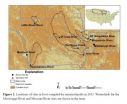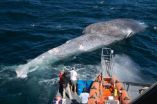(Press-News.org) Millenials are narcissistic, scientists are geeky and men like sports — or so cultural stereotypes would have us believe.
Regardless of whether we believe them to be true, we all have extensive knowledge of cultural stereotypes. But how does this information become associated with certain groups in the first place?
Research published in Psychological Science, a journal of the Association for Psychological Science, suggests that cultural stereotypes are the unintended but inevitable consequence of sharing social information.
"We examined how social information evolves when it is repeatedly passed from person to person," explained psychological scientist Doug Martin, who leads the Person Perception Laboratory at the University of Aberdeen. "As it passes down a chain of individuals, social information that is initially random complex and very difficult to remember becomes a simple system of category stereotypes that can be learned easily."
According to Martin and colleagues, stereotypes may have negative consequences when they contribute to prejudice, but they can also help us make sense of the world around us, helping us in "the way we organize, store, and use information about other people."
"For example, if we meet a stranger, stereotypes provide us with a foundation on which we can begin to build an impression of this person and therefore guide our behaviour towards them," says Martin.
Martin and colleagues conducted lab experiments in which they asked people to remember information about novel alien characters and then pass this information from person to person. Like the game "Telephone," they expected the information to change as it travelled down the chain of people.
Volunteers were asked to learn personality attributes that described the aliens, all of whom shared certain physical features such as their color, their shape, or the way they moved.
Each person was then tested to see what they could remember. Whatever information they produced was then passed on to be learned by the next volunteer and so on until a chain of information was created.
"As information is passed from person to person, what begins as a chaotic and random association of aliens and attributes becomes simpler, more structured and easier to learn," says Martin. "By the end of the chain we have what look very much like stereotypes with physical features — such as color — strongly associated with the possession of specific personality attributes."
The researchers say stereotypes appear to form and evolve because people share similar cognitive limitations and biases.
People are more likely to confuse the identity of individuals when they belong to the same social category than when they belong to different categories. Similarly, people are more likely to mistakenly think that individuals who belong to the same social category also share the same attributes. Because we all experience the same category-based memory biases, when social information is repeatedly shared it is continually filtered as it passes from one mind to the next until eventually it becomes organised categorically and a stereotype has formed.
The scientists say their research appears to explain why some stereotypes have a basis in reality while others have no obvious origin.
"For example, the cultural stereotype of Scottish people includes attributes that are overrepresented among Scots, such as wearing kilts and having red hair, but also attributes that seemingly have no basis in reality, such as being miserly or dour," says Martin.
"Where a genuine relationship exists between social categories and attributes, people are very good at detecting this, remembering it and then passing this information on. Equally, however, where there is no existing relationship between social categories and attributes, we see this association emerging spontaneously over time as the social information evolves," Martin explains. "If we can understand how cultural stereotypes form and naturally evolve then we might be able to positively influence their content in the future."
INFORMATION:
Co-authors include Jacqui Hutchison, Gillian Slessor, and James Urquhart of the University of Aberdeen; Sheila J. Cunningham of Abertay University; and Kenny Smith of the University of Edinburgh.
The study was funded by a grant from the Economic and Social Research Council (ESRC).
For more information about this study, please contact: Douglas Martin at doug.martin@abdn.ac.uk.
The article abstract is available online: http://pss.sagepub.com/content/early/2014/07/22/0956797614541129.abstract
The APS journal Psychological Science is the highest ranked empirical journal in psychology. For a copy of the article "The Spontaneous Formation of Stereotypes via Cumulative Cultural Evolution" and access to other Psychological Science research findings, please contact Anna Mikulak at 202-293-9300 or amikulak@psychologicalscience.org.
Cultural stereotypes may evolve from sharing social information
2014-07-24
ELSE PRESS RELEASES FROM THIS DATE:
A tiny new species of frog from Brazil with a heroic name
2014-07-24
The Atlantic Forest is a hotspot of biodiversity and one of the most species richness biome of anurans (frogs, tree-frogs, and toads) in the world. However, current levels of diversity might be still underestimated. In the past few years has been an increase in the description of new endemic species of this biome along with the advance of molecular techniques and availability of samples for DNA analysis.
Using a more extensive number of samples for molecular and morphological analysis, researchers from the University of Richmond and The George Washington University ...
New radiological signs of gastric lap band slippage identified
2014-07-24
Researchers in Ohio and Rhode Island have identified two previously undescribed radiological signs of potentially life-threatening slippage of laparoscopically adjustable gastric bands. Adding widespread knowledge of the new signs—inferior displacement of the superolateral band margin by more than 2.4 cm from the diaphragm and the presence of an air-fluid
level above the band on a frontal radiograph—to radiologists' knowledge base will aid them in diagnosing affected bariatric patients. These signs of serious complications are evident on upright frontal scout radiographs, ...
Corn & soy insecticides similar to nicotine found widespread in Midwest rivers -- USGS news
2014-07-24
Insecticides similar to nicotine, known as neonicotinoids, were found commonly in streams throughout the Midwest, according to a new USGS study. This is the first broad-scale investigation of neonicotinoid insecticides in the Midwestern United States and one of the first conducted within the United States.
Effective in killing a broad range of insect pests, use of neonicotinoid insecticides has dramatically increased over the last decade across the United States, particularly in the Midwest. The use of clothianidin, one of the chemicals studied, on corn in Iowa alone ...
Fukushima accident underscores need for US to seek out new information about nuclear plant hazards
2014-07-24
WASHINGTON -- A new congressionally mandated report from the National Academy of Sciences concludes that the overarching lesson learned from the 2011 Fukushima Daiichi nuclear accident is that nuclear plant licensees and their regulators must actively seek out and act on new information about hazards with the potential to affect the safety of nuclear plants. The committee that wrote the report examined the causes of the Japan accident and identified findings and recommendations for improving nuclear plant safety and offsite emergency responses to nuclear plant accidents ...
Continuous antibiotics not necessary for many children with common prenatal abnormality
2014-07-24
Up to 5 percent of all prenatal ultrasounds uncover antenatal hydronephrosis, or enlarged kidneys, the most commonly detected prenatal abnormality in the United States. Many children with this abnormality are treated continually with preventive antibiotics for the first few years of life with the hopes of preventing the condition's associated urinary tract infections. Until recently, however, little evidence existed as to the benefits of this treatment, which involves considerable cost and inconvenience for families. But a study published this week in the Journal of Pediatric ...
Study gives new perspective on agricultural plastic, debris burning, and air quality
2014-07-24
RIVERSIDE, Calif. -- To reduce fire hazard in the United States, wildland managers often utilize the silvicultural practice of mechanically cutting woody shrubs and suppressed trees (ladder fuels). These cuttings and other post-logging debris are then burned during periods of low fire danger in order to dispose of the material. To improve the burning and minimize hazardous air pollutants, managers often cover all or part of the debris pile with low-density polyethylene plastic, commonly referred to as agricultural plastic, in order to keep water out. A recent study published ...
Age of puberty in girls influenced by which parent their genes are inherited from
2014-07-24
(Boston)--The age at which girls reach sexual maturity is influenced by 'imprinted' genes, a small sub-set of genes whose activity differs depending on which parent passes on that gene, according to new research published today in the journal Nature.
The findings come from an international study of more than 180,000 women involving scientists from 166 institutions worldwide, including Boston University School of Medicine. The researchers identified 123 genetic variations that were associated with the timing of when girls experienced their first menstrual cycle by analysing ...
15-year analysis of blue whale range off California finds conflict with shipping lanes
2014-07-24
NEWPORT, Ore. -- A comprehensive 15-year analysis of the movements of satellite-tagged blue whales off the West Coast of the United States found that their favored feeding areas are bisected by heavily used shipping lanes, increasing the threat of injury and mortality.
The researchers note that moving the shipping lanes off Los Angeles and San Francisco to slightly different areas – at least, during summer and fall when blue whales are most abundant – could significantly decrease the probability of ships striking the whales. A similar relocation of shipping lanes in the ...
Greater odds of adverse childhood experiences in those with military service
2014-07-24
Bottom Line: Men and women who have served in the military have a higher prevalence of adverse childhood events (ACEs), suggesting that enlistment may be a way to escape adversity for some.
Authors: John R. Blosnich, Ph.D., M.P.H., of the Veterans Affairs Pittsburgh Healthcare System, and colleagues.
Background: The prevalence of ACEs among U.S. military members and veterans is largely unknown. ACEs can result in severe adult health consequences such as posttraumatic stress disorder, substance use and attempted suicide.
How the Study Was Conducted: Authors compared ...
Enhanced recovery program following colorectal surgery at community hospitals
2014-07-24
Bottom Line: An enhanced recovery program for patients after colorectal surgery appears to be feasible in a community hospital setting after having been shown to be successful in international and academic medical centers.
Author: Cristina B. Geltzeiler, M.D., of Oregon Health and Science University, Portland, and colleagues.
Background: The fundamental aspects of enhanced recovery after surgery (ERAS) programs are guidelines that focus on patient education, optimal fluid management, minimal incision length, decreased use of tubes and drains, opioid-sparing analgesia, ...



